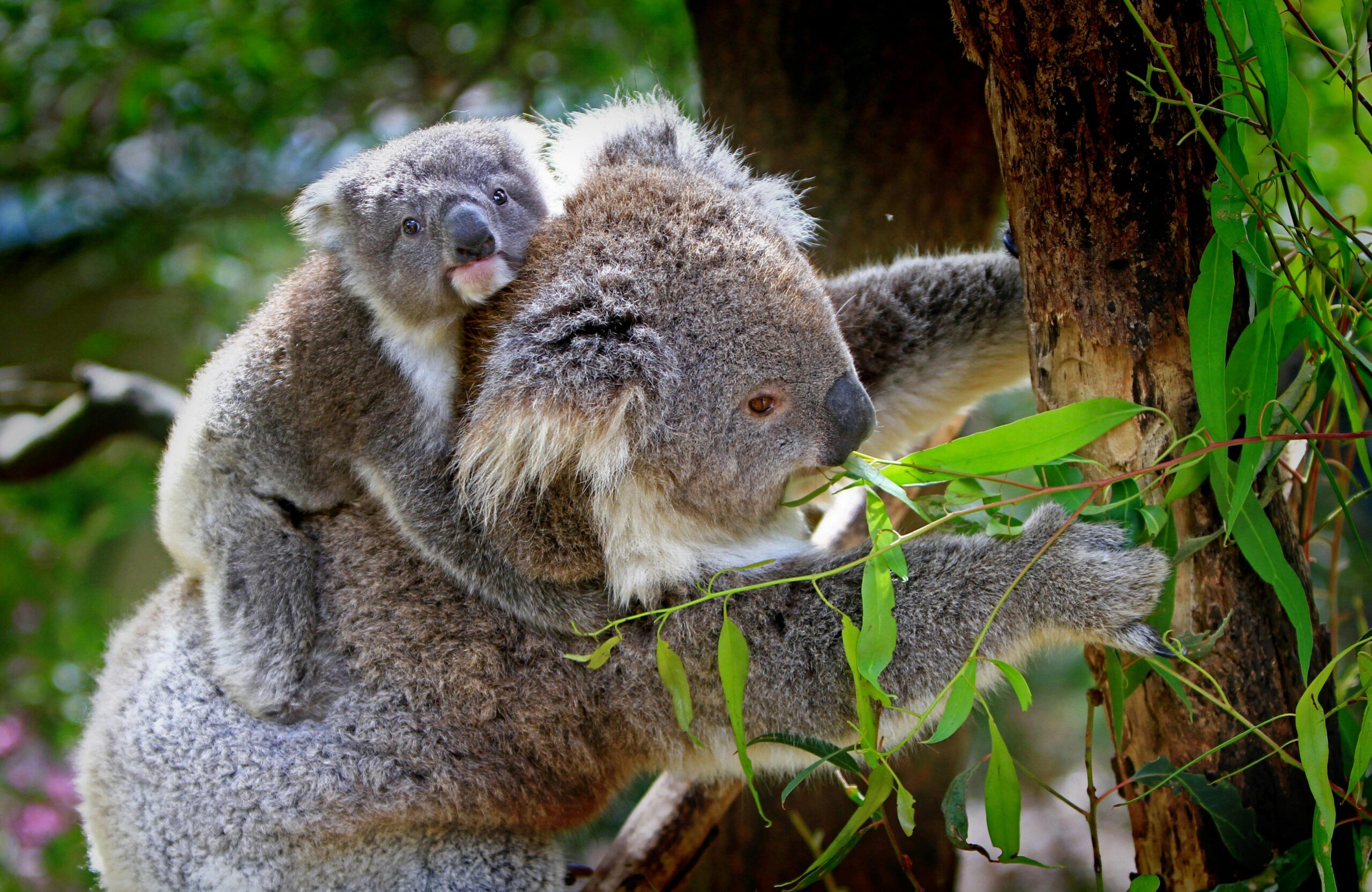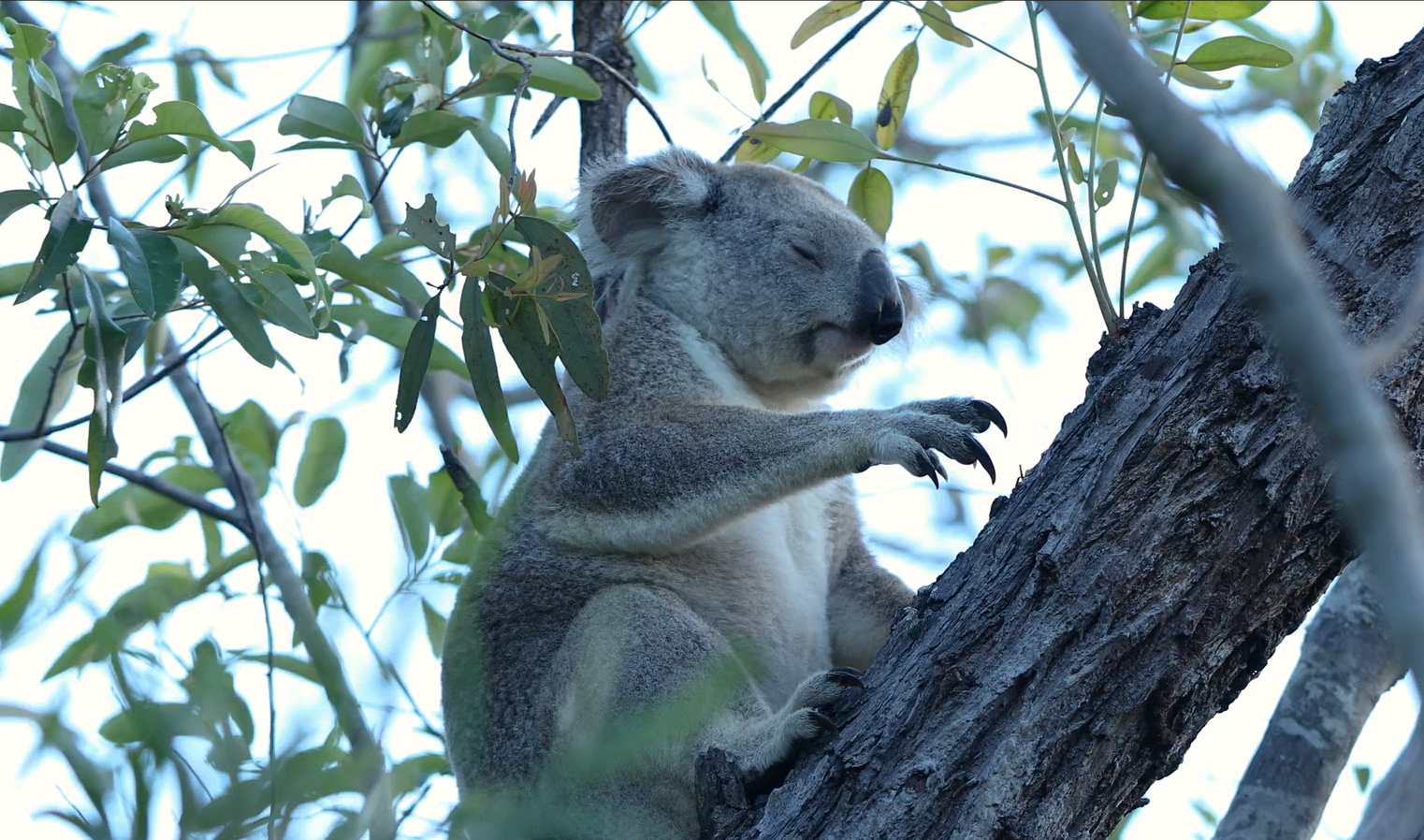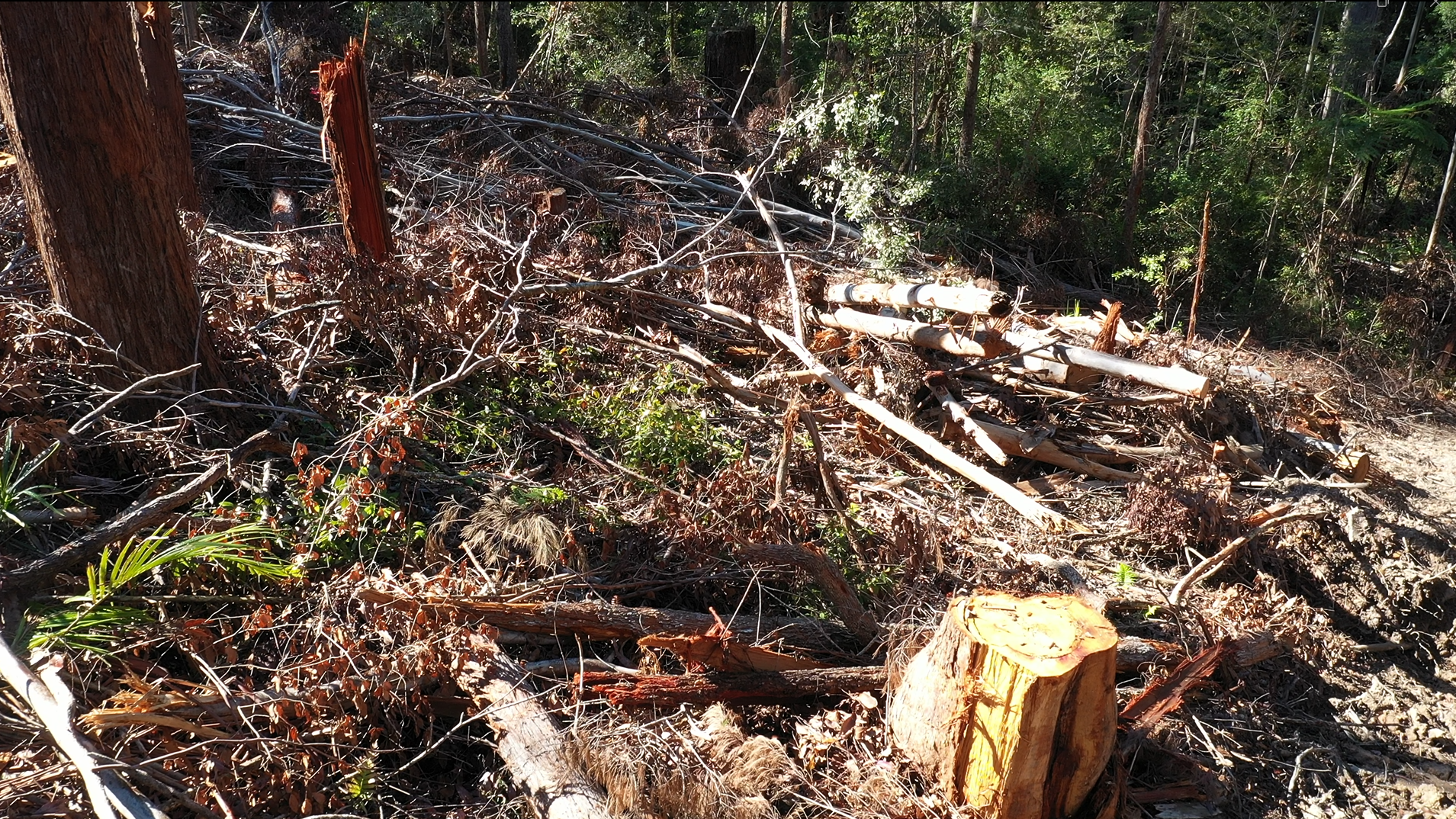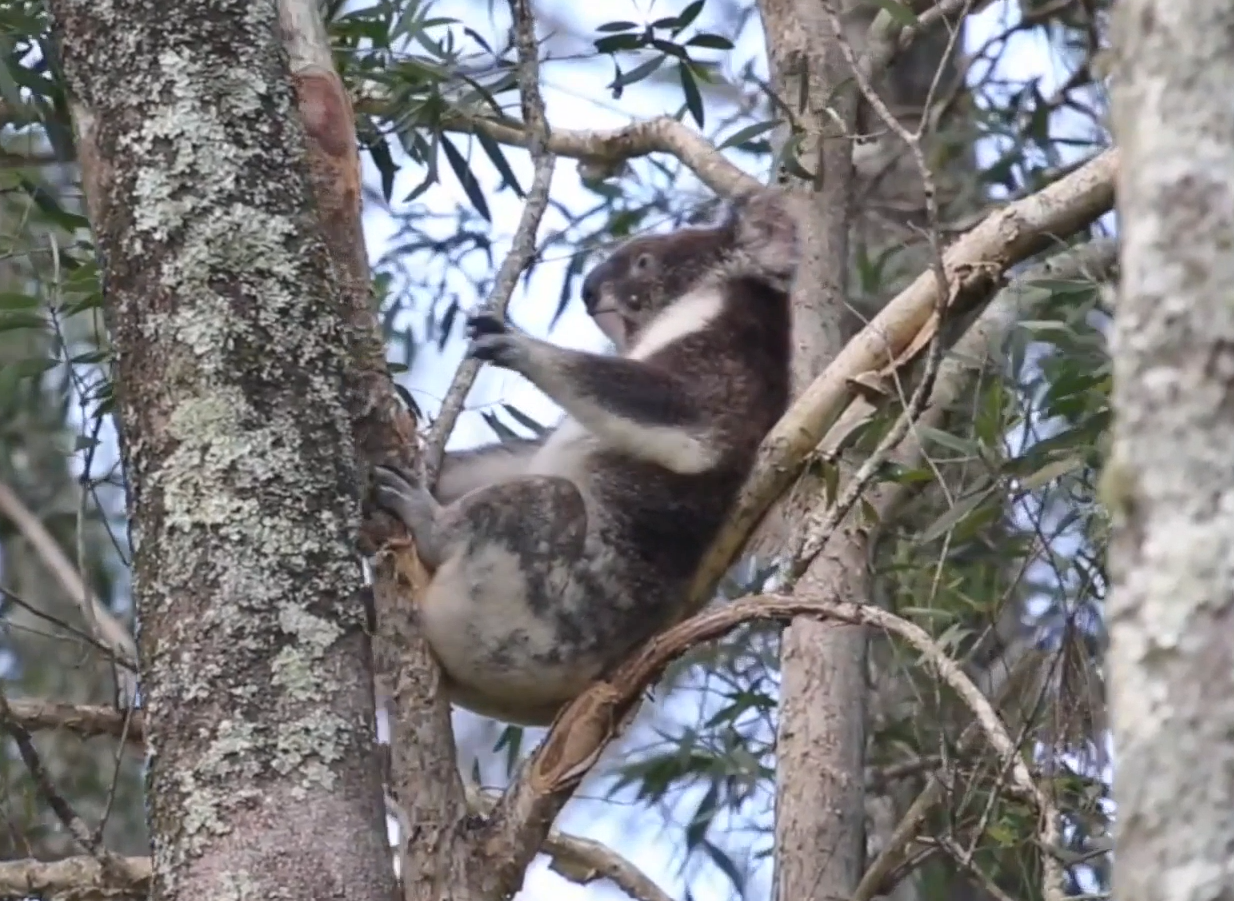Bear minimum isn’t enough to save Great Koala National Park

This article is brought to you by Koala.
“When dunggiirr are dying, it’s like part of my family is dying. We need to help people understand that.”
Gumbaynggirr Elder Uncle Micklo Jarrett is emphatic in his defence of koalas. They’re his widjir (totem) animal: “Dunggiirr [koalas] are sacred to my people and the landscape. They’re vital to our Creation stories, laws and customs, and our identity.”
Sprawled across the idyllic New South Wales Mid North Coast, Gumbaynggirr Country is the site of the proposed Great Koala National Park (GKNP). A breathtaking expanse of eucalypt trees and Gondwana rainforest, “it’s also home to the best koala habitat in the world,” says GKNP founding campaigner Ashley Love. “It has taken 50 years and a recent change in classification of the koala, from vulnerable to endangered, to finally protect it.”
In February 2022, under the Environmental Protection and Biodiversity Act 1999, the iconic marsupial was classified as endangered on Australia’s east coast, with reports revealing up to 62 per cent of NSW’s population had been lost since 2001. Queensland’s population crashed by an estimated 50 per cent over the same period.

At the time of classification, conservationists and scientists agreed this was a vital turning point for koalas.
“They had gone from no listing, to being listed as vulnerable, then endangered, within a decade,” said WWF Australia conservation scientist Dr Stuart Blanch. “That is a shockingly fast decline. The decision [to list koalas as an endangered species] is welcome, but it won’t stop them from sliding towards extinction unless it’s accompanied by stronger laws and landholder incentives to protect their forest homes.
“Koala numbers have halved in the past 20 years… We must turn this trend around and instead double the number of east-coast koalas by 2050.”
NSW Labor campaigned for the GKNP in the race to win government in the March 2023 election. Not long after this, the new government promised $80 million in funding over four years to support the park’s development.
“I don’t accept that one of our most loved and iconic native species could become extinct here,” said NSW Premier Chris Minns at the time. “By protecting the places these koalas live, and by working closely with all stakeholders, we can ensure we bring these incredible creatures back from the brink.”

Three months later, the government was being urged by MPs and environmentalists alike to fast-track the end to all logging operations in the proposed GKNP. By September, logging was halted in 106 koala hubs – areas of important habitat identified by the NSW environment department in 2017. The hubs, however, cover just 5 per cent of the state forest that the government is now assessing for potential protection. The reviews are expected to be complete by the end of 2024.
When fully realised, the proposed park will include 1760sq.km of state forest and 1400sq.km of existing national parks between Kempsey and Grafton. It will also be a world first – a dedicated koala national park – and protect about 20 per cent of the state’s wild koala population.
Uncle Micklo says that while the concept of the GKNP has been around for decades, now is the time to bring it to fruition. “I come to it as a custodian of the land, to support it through my language and storylines, and thousands of generations of Dreaming.
“It’s my job, it’s all Gumbaynggirr mob’s job, to let people know how important it is. Ngiambandi wajaarrbin yarrang jaagi gurraygu – our homelands are sacred to everyone. And so is the dunggiirr.”



A unique ecosystem
Mid North Coast ecologist Mark Graham is dogged in his determination to deliver a GKNP that hasn’t been ravaged by state-sanctioned logging.
“Gumbaynggirr Country is a place of plenty, on a continental scale,” he says. “That’s because the mountains come right to the coast, so there’s always water and an abundance of food, from the forest through to the sea. Our mission now is to protect, restore and expand the fabric of life here, to keep the rivers flowing, the rain falling, the forests intact and the animals thriving.
“It’s profoundly distressing to our community to realise that the [Minns] government’s intention is to let loggers in and at some point down the track, make some form of GKNP after these globally significant habitats have been gutted. The koala is endangered and in steep decline. The reality is that all industrial logging needs to stop across the GKNP immediately.”
The GKNP is not just a refuge for koalas; it’s a vital ecosystem that supports countless native species, including the endangered glossy black-cockatoo, greater glider, powerful owl and spotted-tail quoll. The park’s unique habitats provide essential resources, including food and shelter, for innumerable animals.


Image credits: Koala
John Pile and Anne Coyle live surrounded by Pine Creek State Forest. Earmarked for inclusion in the GKNP, it is widely recognised as the most iconic coastal koala habitat in the world. The duo have kept meticulous records for more than three decades on logging cause and effect here.
“Integrated logging began in the early 1990s,” he says. “And it turns the last of these diverse, moist coastal forests into simple plantation forests [blackbutt]. It reduces biodiversity, dries out the forest and creates a young, even-aged forest that poses an incredible fire risk.”
Because of John and Anne’s tireless work to protect the forest, Pine Creek has also been the focus of three major independent scientific studies on koalas over the past 30 years.
The latest, published in December 2023, found that the area supports a mosaic of wet and dry sclerophyll forest and rainforest that provide a high level of protection against intense fire and drought. In turn, this enables the region to support one of the largest and most stable koala populations in NSW. These findings, John says, “indicate that the continuation and expansion of high-intensity logging across Pine Creek State Forest has the potential to eliminate koalas from logged areas, destroy corridor links between remnant koala habitat and reduce the quality and integrity of koala habitat in the surrounding region including the proposed GKNP.”
Stop the take
Despite such findings, logging continues in state forests set down for inclusion in the park. And so too do peaceful protests at those very same state forests throughout the region. Locals, often informed by specialists in their fields, such as respected environmental researcher and academic at Queensland’s Griffith University, Dr Tim Cadman, are taking to the streets, forests and halls of parliament to be heard.
At a rally in Tim’s home town of Bellingen, he speaks of the logging operation currently wiping out tracts of important koala habitat in Tuckers Nob State Forest, just north-west of the village.
“I live within the footprint of the proposed park,” he says. “And just like all of you, I’ve had enough of the carnage.” His words are met with cheers.
“It’s a visionary idea, a national park for koalas,” he continues. “But logging and koalas do not mix. In fact, clear-felling is like a nuclear bomb for wildlife – nothing survives.
“If the proposed park is to live up to the ‘Great’ in its name, it has to be as big and as well connected as possible. The government has to end its take within the proposed GKNP area. And now.”
In an attempt to compel the NSW government to stop logging in the proposed GKNP, furniture company Koala, in partnership with Nature Conservation Council NSW, invited Premier Chris Minns to receive a hand-painted mattress in front of NSW Parliament on Save the Koala Day (27 September).
The cheeky artwork features a painting of a koala on a Koala mattress and is emblazoned with “THE KOALAS ALSO NEED SOMEWHERE TO SLEEP” and “DO BETTER THAN THE BEAR MINNS” as a comfy reminder of his previous commitment to establish GKNP.
The aim is to garner 100,000 signatures on the Nature Conservation Council NSW petition and put public pressure on Chris Minns and the NSW Government to stop logging in the proposed National Park and pledge their support to the cause.
According to Koala’s Chief Commercial Officer, Rory Costello, the company is committed to helping the plight of its namesake: “At Koala we’re known for making comfy mattresses and furniture, but we also care about our namesake and are committed to getting koalas off the endangered species list.”
Do your bit to stop logging in the Great Koala National Park. Send a message to the Minns government – Chris, you can do better than the Bear Minns! Sign the petition: https://koala.com/bearminns
Matter of facts
- Koalas are the only living member of the phascolarctidae family, which makes them unique.
- In many First Nations cultures, the koala is a revered totem animal, featuring prominently in Creation myths shared through oral storytelling for thousands of years.
- Koalas are only found in the wild on the southeast and eastern sides of Australia, primarily along the coastlines of Queensland, NSW, South Australia and Victoria.
- Koalas have strong cartilage at the end of their spine that enables them to sit comfortably in eucalyptus trees.
- Koalas survive on a diet of eucalyptus leaves and eat up to 1kg/day. That said, they only have a taste for 50 of the 800 eucalypt species.
- Koalas don’t ‘get high’ on eucalyptus leaves. Rather, the nutrient value of the leaves is so low that koalas need more sleep than most animals – around 18 hours a day.
- Koala chlamydia is a serious disease but is different to human chlamydia. It can cause blindness and reproductive tract infections.
- Deforestation is a major cause of decreasing koala numbers. With their trees demolished, koalas spend more time on the ground – where they’re vulnerable to vehicles, dog attacks and illness – in search of food and shelter.
- Koalas can live up to 15 years in the wild, and females usually live longer than males.
- While koalas are highly territorial mammals and prefer a solitary lifestyle in the wild, they do tolerate other members of the same species during the breeding season.
This article is brought to you by Koala.




